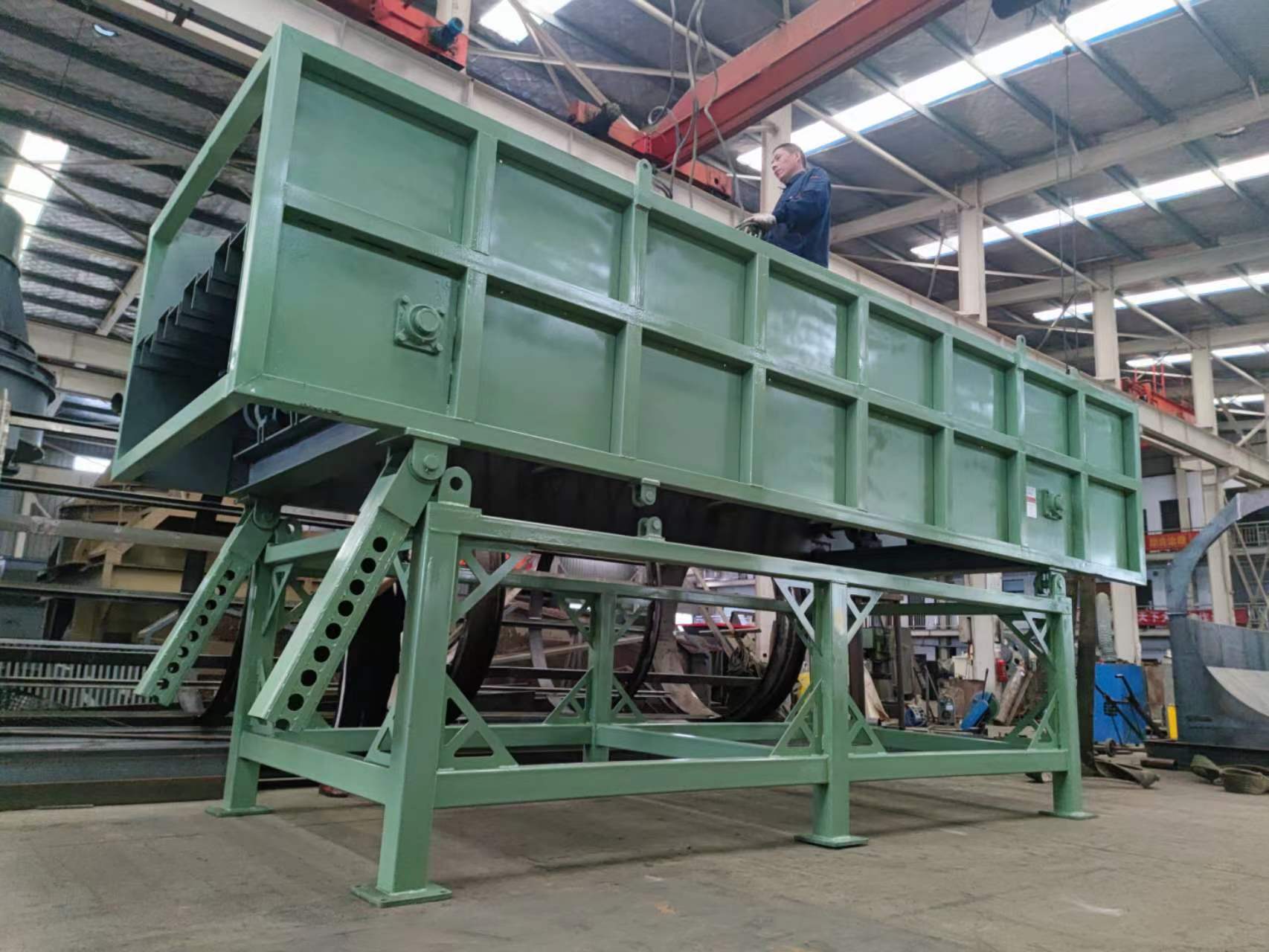Unlock the Potential of ballistic separator for Enhanced Material Separation
Introduction:
The ballistic separator is a specialized piece of equipment designed for the efficient separation of granular materials by size. It operates through a unique bouncing mechanism that causes the material to jump or hop across the screen surface, enhancing the separation process. This type of screen is particularly useful in industries such as mining, agriculture, and recycling where precise particle size control is essential.

Features:
Bouncing Action: The distinctive bouncing motion helps prevent material from sticking to the screen and increases the throughput.
Adjustable Amplitude: The amplitude of the bounce can be adjusted to optimize performance for different materials and particle sizes.
Low Maintenance: The design is often simple and robust, requiring minimal maintenance.
Energy Efficiency: The bouncing mechanism can be more energy-efficient compared to other types of vibrating screens.
Applications:
Mining: Separating ore and other mined materials by size.
Agriculture: Sorting grains and seeds.
Recycling: Separating recyclable materials such as plastics and metals.
Construction: Screening aggregates for concrete and asphalt production.
Types of Waste Suitable for Bounce Screens
1.Municipal Solid Waste (MSW):
Paper Products: Newspaper, magazines, cardboard, and mixed paper.
Plastic: PET bottles, HDPE containers, and other rigid plastic items.
Glass: Bottles, jars, and other glass containers.
Metal: Aluminum cans, steel cans, and small metal objects.
Organic Material: Food scraps, yard waste, and other biodegradable materials.
Concrete and Brick: Crushed concrete, bricks, and masonry.
Wood: Untreated lumber, pallets, and other wooden debris.
Asphalt Shingles: Roofing materials.
Metal: Rebar, nails, and other scrap metal.
Plastics: Pipes, insulation, and other construction plastics。
Metal Scraps: Small pieces of metal from manufacturing processes.
Plastic Scraps: Off-cuts, rejects, and other plastic waste.
Rubber Scraps: Tires, conveyor belts, and rubber parts.
Textile Scraps: Worn-out clothing, rags, and other textile waste.
Paper Scraps: Packaging materials, labels, and office paper waste.
Crop Residues: Stems, stalks, and husks from harvested crops.
Livestock Manure: Organic waste from farm animals.
Poultry Litter: Feathers, bedding, and other poultry waste.
Green Waste: Leaves, grass clippings, and other garden waste.
Electronic Components: Circuit boards, wires, and cables.
Batteries: Lead-acid batteries, lithium-ion batteries, and other battery types.
Computer Hardware: Hard drives, keyboards, and other computer components.
Telecommunication Equipment: Cables, connectors, and telephones.
Mixed Plastics: Various types of plastics that require sorting before recycling.
Mixed Paper and Cardboard: Unsorted paper products that need to be separated.
Mixed Metals: Aluminum, steel, and other metals mixed together.
Efficient Separation: The bouncing motion effectively separates materials by size and density.
Reduced Contamination: Helps in minimizing cross-contamination between different waste streams.
Increased Throughput: The unique motion allows for higher processing rates compared to traditional screens.
Lower Maintenance: Often designed with fewer moving parts, leading to lower maintenance costs.
Versatility: Can handle a wide range of materials, making it suitable for various waste streams.
2.Construction and Demolition Waste (C&D):
3.Industrial Waste:
4.Agricultural Waste:
5.E-Waste:
6.Recyclable Materials:
7.Benefits of Using ballistic separator for Waste Processing:
When considering the use of a bounce screen for waste processing, it's important to ensure that the screen is properly calibrated and maintained to achieve optimal performance and longevity.
-
 Trommel screenTrommel screen, also known as drum screens, are widely used in various industries for sorting and separating materials.Get Quote
Trommel screenTrommel screen, also known as drum screens, are widely used in various industries for sorting and separating materials.Get Quote -
 Crop straw double shaft shreddApplications:Biomass Energy Production: Shredded straw can be used as a feedstock for bioenergy plants to produce electricity or heat.Livestock Feed: Reduced-si...Get Quote
Crop straw double shaft shreddApplications:Biomass Energy Production: Shredded straw can be used as a feedstock for bioenergy plants to produce electricity or heat.Livestock Feed: Reduced-si...Get Quote -
 Zhongcheng Air Drum SeparatorAir drum separators effectively separate lightweight materials (e.g., plastics, paper) from heavier materials (e.g., metals, glass). This high efficiency is cru...Get Quote
Zhongcheng Air Drum SeparatorAir drum separators effectively separate lightweight materials (e.g., plastics, paper) from heavier materials (e.g., metals, glass). This high efficiency is cru...Get Quote
-
2023-01-12Waste Baler For MSWHigh density solid waste balers are the final step before sending waste to landfill. Horizontal balers designed and manufactured for this difficult job and prov...
-
2024-05-18Jaw CrusherThe working principle of jaw crusher Although the jaw crusher has various structural types, its working principle is the same, that is, the material is crushed ...
-
2024-06-09Advantages of Using Drum Screening Machines in Waste ManagementUnderstanding the working principle of drum screening machines is essential to appreciate their efficiency and effectiveness in waste management. Operation and ...
-
2023-01-12WindshifterWindshifter (Air Drum Separator ) is the ideal solution for separating all kind of waste types into two fractions, heavy and light. The robust construction and ...
-
2023-01-12Impact CrusherImpact crusher is a type of machine designed to reduce large rocks, ores, and other hard materials into smaller, more manageable pieces. This equipment is widel...



